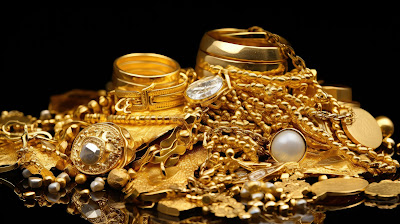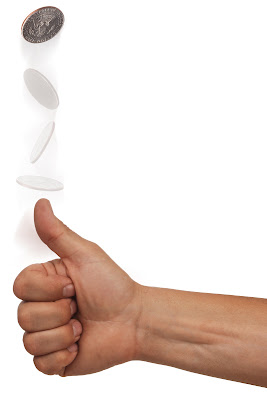Collecting gold scrap can be a fun way to make some extra money. For this modern-day treasure hunt, your best bet is to look for gold jewelry in flea markets and thrift shops. If you’re down for a chemistry experiment, you can also mine for gold in your old computers and other electronics. Once you’ve got a collection going, send it along to a buyer online or locally to cash in on your shiny finds!
1.) Look for flea markets or shops with costume jewelry. This is the easiest way to collect scrap gold. Google flea markets and thrift shops near you. It’s best to look for larger flea markets with lots of vendors, as these events will concentrate the most potential gold in one spot. Some flea markets might operate more like festivals and will only be open for business once per year.
2.) Visit the market in the morning. The earlier you get to the market or shop, the better. Aim to arrive 15 minutes before it opens so you can be one of the first visitors to take advantage of cool finds and great deals. Go for the costume jewelry displays first, then move on to the more expensive collections.
It’s best to schedule your gold hunt on a day when you don’t have anything else going on. Pick a day off from work or a free Saturday so you can spend hours looking for your treasures.
3.) Find a pocket-sized magnet to bring along. You can purchase a magnet online or at a local hardware store. Look for one that’s about the size of a domino. You can use this tool to test if jewelry is gold or just another metal that’s been plated with gold.
The magnet won’t stick to real gold. Test clasps and other parts of jewelry separately. Sometimes a clasp will be plated, but the majority of the piece will be real gold.
4.) Search for markings showing the gold content of the piece. Look for labels showing what type of gold the jewelry is. In the United States, most jewelry will be stamped as 10K, 14K, 18K, or 24K. The “K” stands for a karat (sometimes spelled carat), a measurement that indicates the amount of gold in an item. A 24K piece is pure gold.
For jewelry made outside of the United States, you may just see numbers instead of karat markings. 10K translates to 417, 14K is 585, 18K is 750, and 24K is 999.
5.) Avoid jewelry with manufacturing markings. Some jewelry will be labeled with an assortment of letters. These markings show that the gold is plated. Stay away from the following:
- GE, which means gold electroplate. You may also see GP, which stands for gold plated.
- HGE, or heavy gold electroplate.
- GF for gold filled.
- HGP, or heavy gold plate.
It’s also a good rule of thumb not to purchase jewelry with unusual or unidentifiable markings. These are usually a good indicator that it’s not gold.
6.) Don’t spend over $10 USD per piece. The only way to make money off your gold scrap is not to spend too much collecting it! Many flea markets will allow you to buy a whole bag of mixed costume jewelry for between $2 and $10 USD. You can also choose to purchase individual pieces. And don’t forget to haggle!
Offer your vendor less than their asking price and hesitate when they give you a higher counter-offer. You could say something like: “I can give you $2 instead of $5 for that bracelet.”









